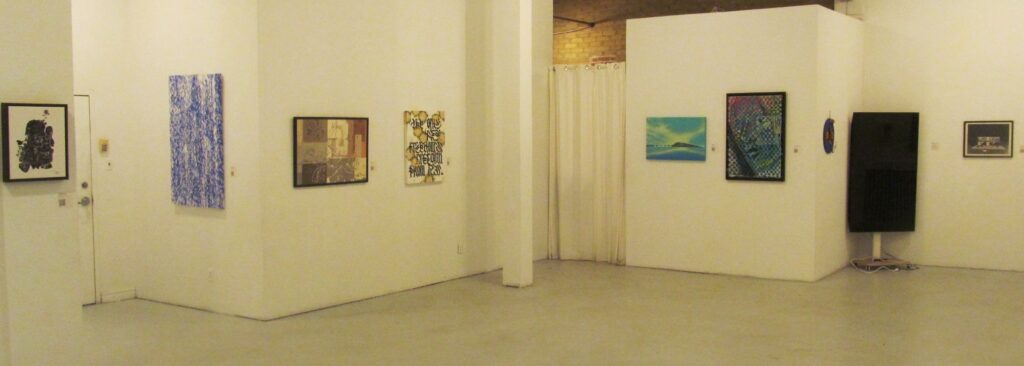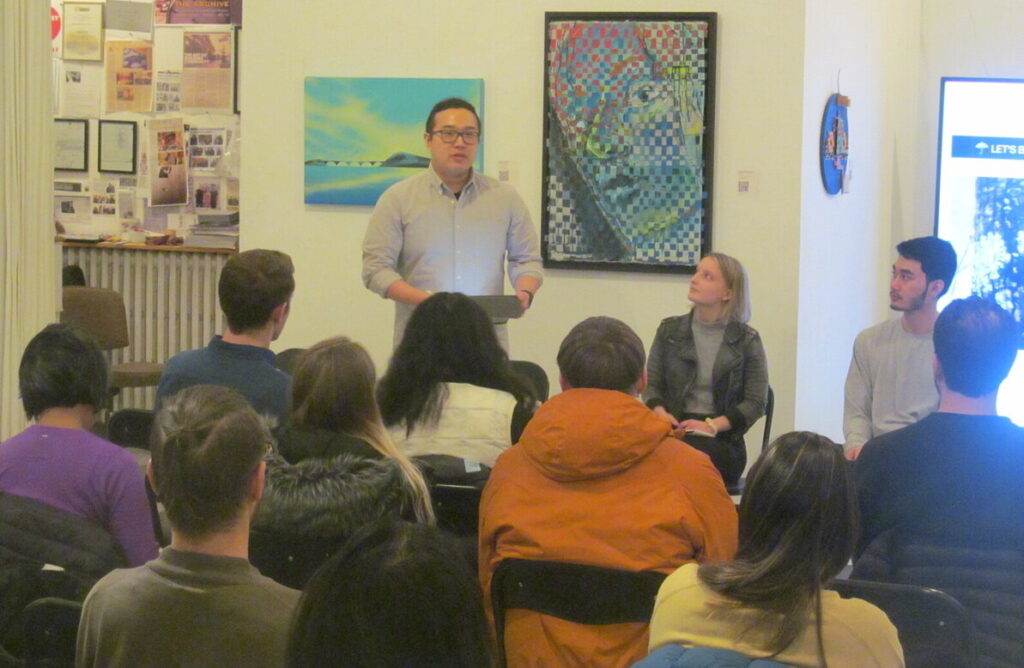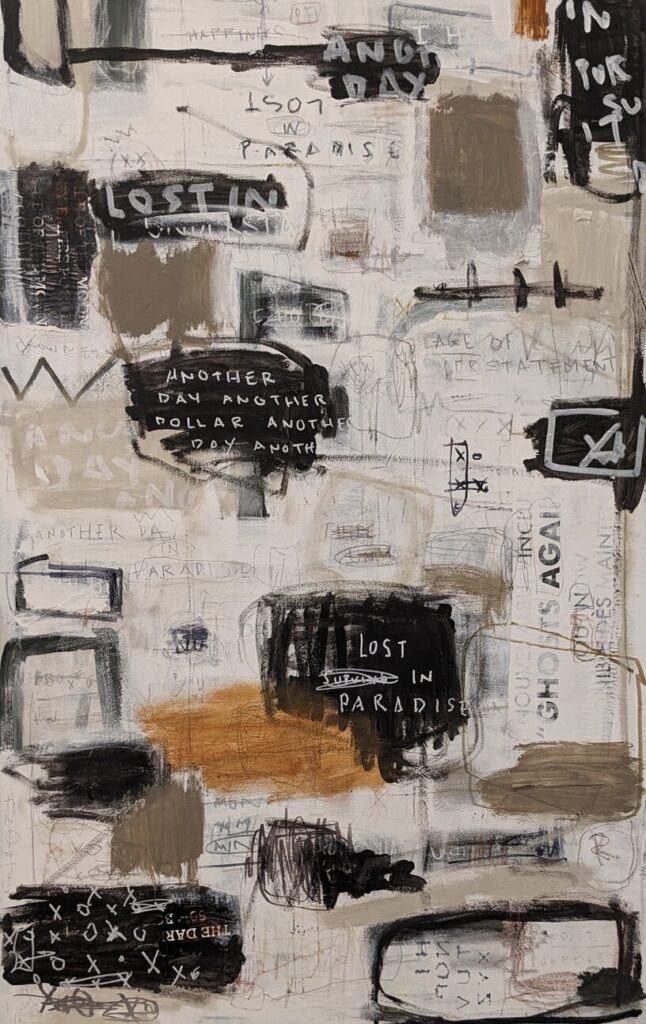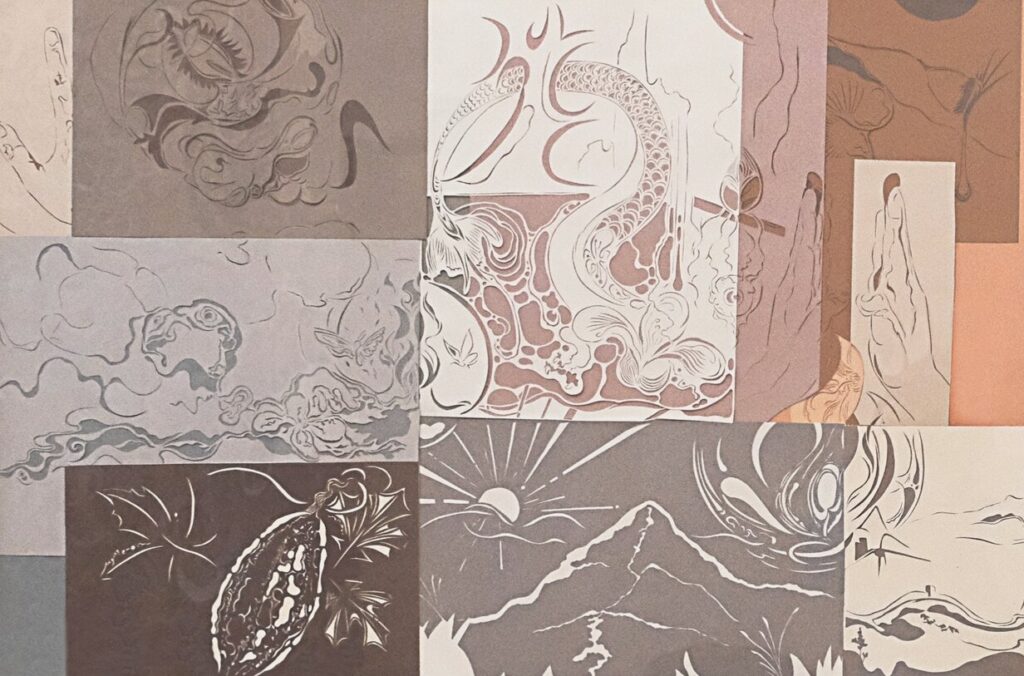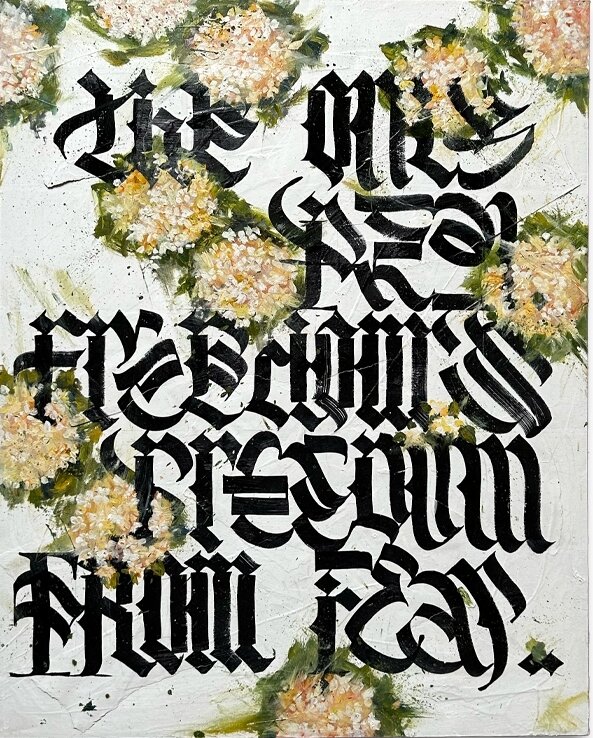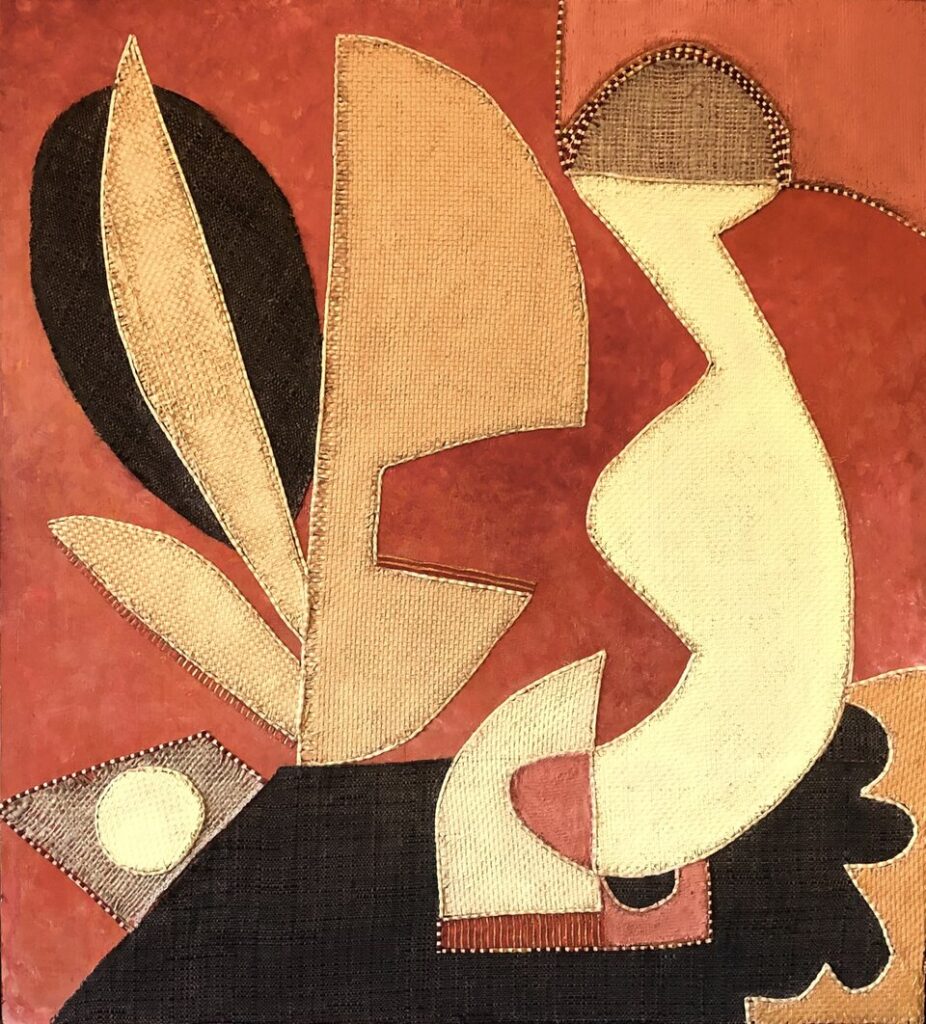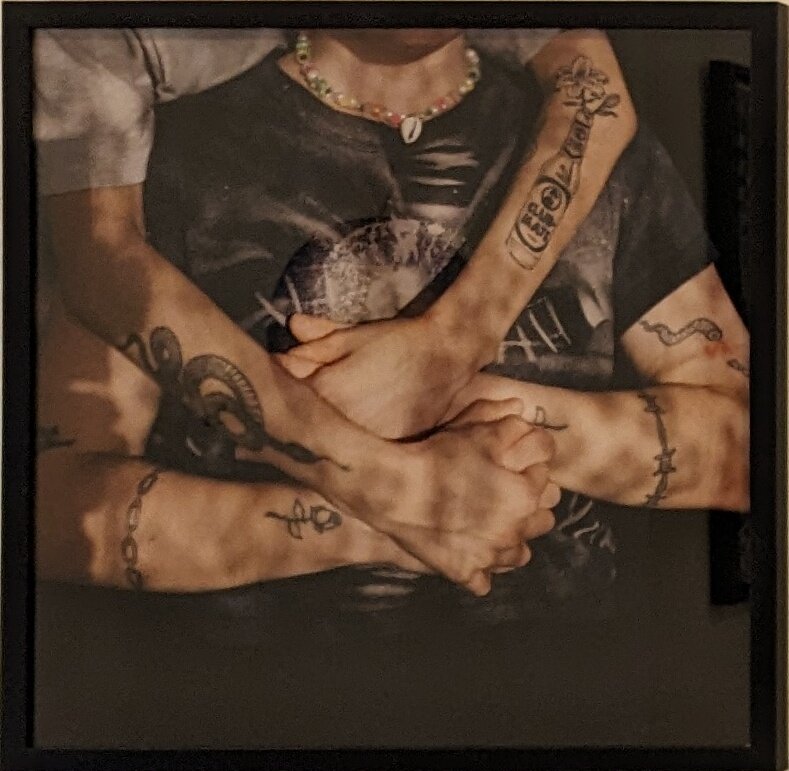As part of this year’s TO Design Festival the online Partial Gallery has exhibited a selection of artworks at Gallery 1313 – images of which can be found on its website. The show features the work of 28 artists in all. Founded in 2016, the gallery has built up an extensive catalogue of artworks – running into the thousands – that can either be bought or rented. I would describe the gallery as having a collection of images, as opposed to artworks, to underline the distinction, which, as I explain below, is important.
Installation view of Partial Gallery, Art Intelligence: The Near Future of Art in Canada, Photo: Phil Anderson
While ostensibly the show aims to highlight some of the artworks that can be bought or rented from the website, the gallery advertises the show as a forum for the discussion of the influence of AI on art in Canada. As they put it in their publicity: ‘A series of programming will explore the dynamic interplay between the artist journey, art collecting, and technological innovation’. To that end, in conjunction with the exhibition itself, Partial has hosted a series of discussions on this and related topics, which were held at Gallery 1313.
Dr Chris Kim, co-founder of Partial Gallery, speaks at the panel, Tech and the Near Future of Art on Wednesday, January 24, 2024, 6:30pm. Photo: Phil Anderson
The artworks on display are not, as one might expect from the advertised theme of the show, generated using artificial intelligence. They are mostly, rather, old fashioned hand-made works, so to speak. The online gallery itself uses an AI tool, with the acronym PAAS (Partial’s AI-assisted Art Sommelier), for selecting art from its catalogue according to the visitor’s preferences. I find the use of the term ‘sommelier’ ironic given that the luxury vintage wine market is as large as the international art market, in terms of sales in auctions at least. When you think about it, art and wine, as commodities have much in common. I’ll let you do that rather than me spelling it out.
Patrick Skals: Another Day in Paradise
Anyhow, what is clear is that here art is seen as just that, namely a commodity. To the extent that artworks are thought of as luxury items, the traditional approach of art dealers is to showcase what ‘is judged’ as the best or most deserving of attention. Exclusivity is key. That is not the case with Partial. Instead, the gallery offers a platform for very many artists. It is a democratic model in this sense. Indeed, in a brochure, pitching to artists, the gallery declares: ‘We understand that opportunities arise when there are no limitations to exclusivity’. The result, of course, is that there is a vast range in the quality of the artworks on offer on their site – the good, the bad and the ugly. As a rule the work is very affordable. Over all, it seems like a very good resource for art as a mass market. There is no shortage of people seriously making art in their homes and studios that will never get the opportunity to be represented by an exclusive gallery. Likewise, there are perhaps many people who would buy art when it is affordable. So kudos to Partial.
Jenny Zhang: Paper life
A peculiar feature of art is that it is made by individuals and yet the resultant work most often struggles to be distinctive, other than in a trivial sense, where the artist has developed a recognizable style but viewers, on reflection, can’t help thinking that it reminds them of something they have seen before. At Partial almost all the art reminds one of something else in this way. That brings me to Partial’s event, where those gathered discussed the influence, good and bad, of AI on art. The discussion soon turned to the image-generating tools developed through machine learning technology, e.g., Midjourney. Everyone recognized the derivative nature of their creations given that they attain their ability to generate images by building up a vast storage of preexisting, human created imagery, basically scraped off the internet. As has been reported recently, these tools raise a serious ethical issue regarding intellectual property rights. If they rely on what amounts to plagiarism, many voiced their concern that its creations amount to theft, since no permission has ever been granted to, or even sought by, their developers to use other people’s imagery in this way.
Nick Zhurid, Freedom
There is an irony, I want to suggest, in the fact that this iteration of AI image generators – or some updated version of them – will likely be capable of making images that are indistinguishable from the sort of images to be found on Partial’s website. Now this may sound as if I am essentially dismissing the artworks in the gallery’s catalogue as irredeemably derivative, but my point is more subtle than that.
Diane Fine: Birds of a Feather
Speficially, AI is on the cusp of being capable of producing images that are more or less indistinguishable from human made ones, i.e., traditional artworks. One might say they will pass the visual version of the Turing test. As such, they are able to imitate artworks rather than making them. What is the difference? It is difficult to say. However, it strikes me that context is important here. Making art entails being immersed in the world – being among people, reacting emotionally to this or that element of one’s environment and so on. It is a quintessentially human endeavor, a way of coping with the world.
Mina Nowzari: The Embrace
Machines can do none of this. All they are capable of doing is imitating the end product of these contextual conditions, namely, the artwork. But, crucially, context is largely ignored by the art market to the extent that it treats artworks as commodities. Gallerists and curators try to showcase the context, that is, highlight the artist’s motives, thinking etc. But at a venue like Partial such context-building is difficult to achieve, though some attempts are made. Sheer numbers prohibit it. Most visitors to the site are effectively treated like shoppers, and presented with images that might catch their eye. Inevitably this becomes the overriding context for the production of the artworks themselves. They are made with selling in mind. Could one imagine, hypothetically of course, an artist like Paul Cézanne doing what he did in such an environment, where he made his works to sell in venues like Partial Gallery? I, for one, cannot. Such a commodified environment would be anathema to his very being. Insofar as artists make their wares to sell at places like Partial, they should take heed of the danger of AI. It is coming to replace you.
Hugh Alcock
Images are courtesy of Partial Gallery
*Exhibition information: Partial Gallery, Art Intelligence: The Near Future of Art in Canada, January 17 – 28, 2024. Gallery 1313, 1313 Queen Street West, Toronto. Gallery hours: Wed – Sat 1 – 5pm, Sun 1 – 4 pm.

